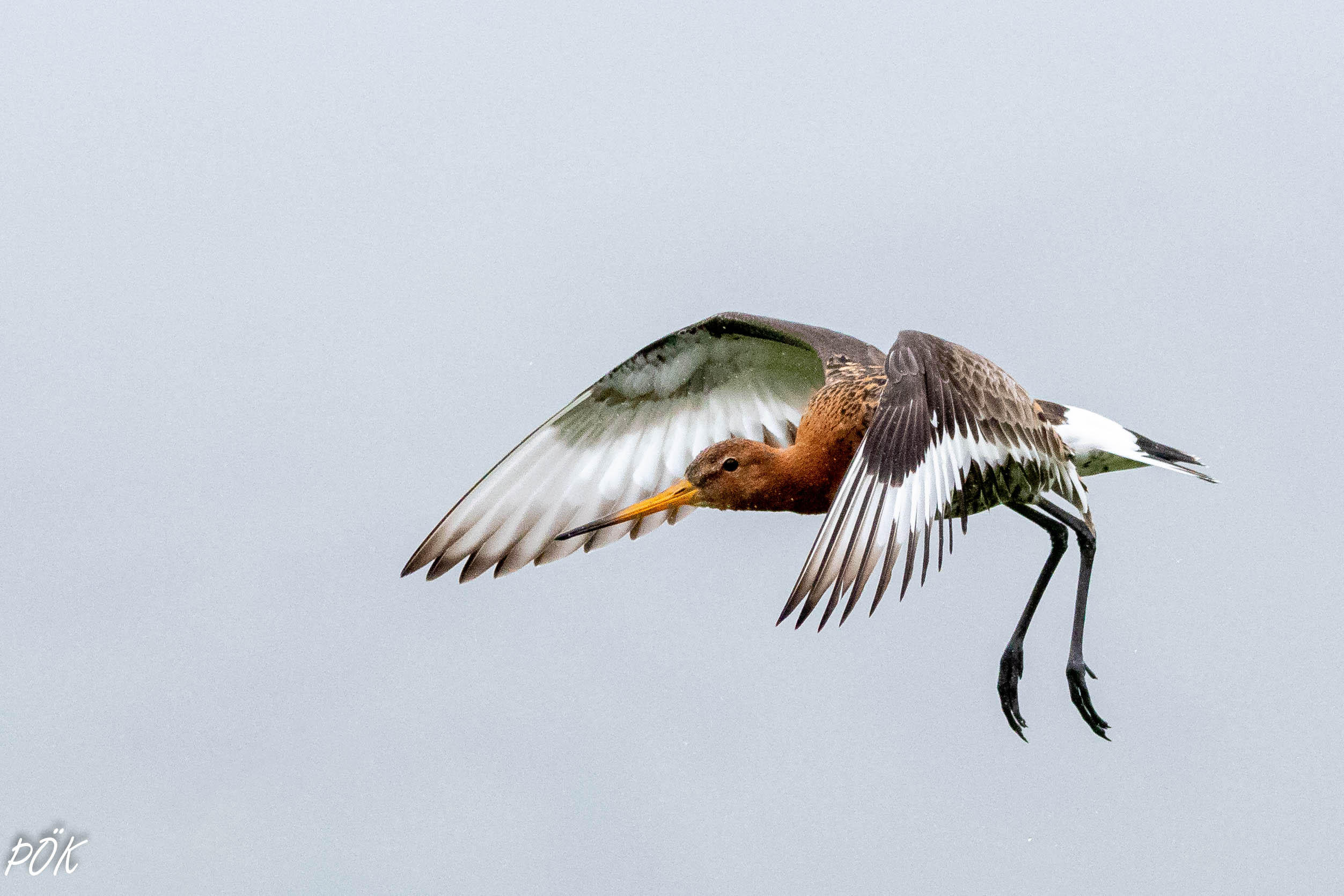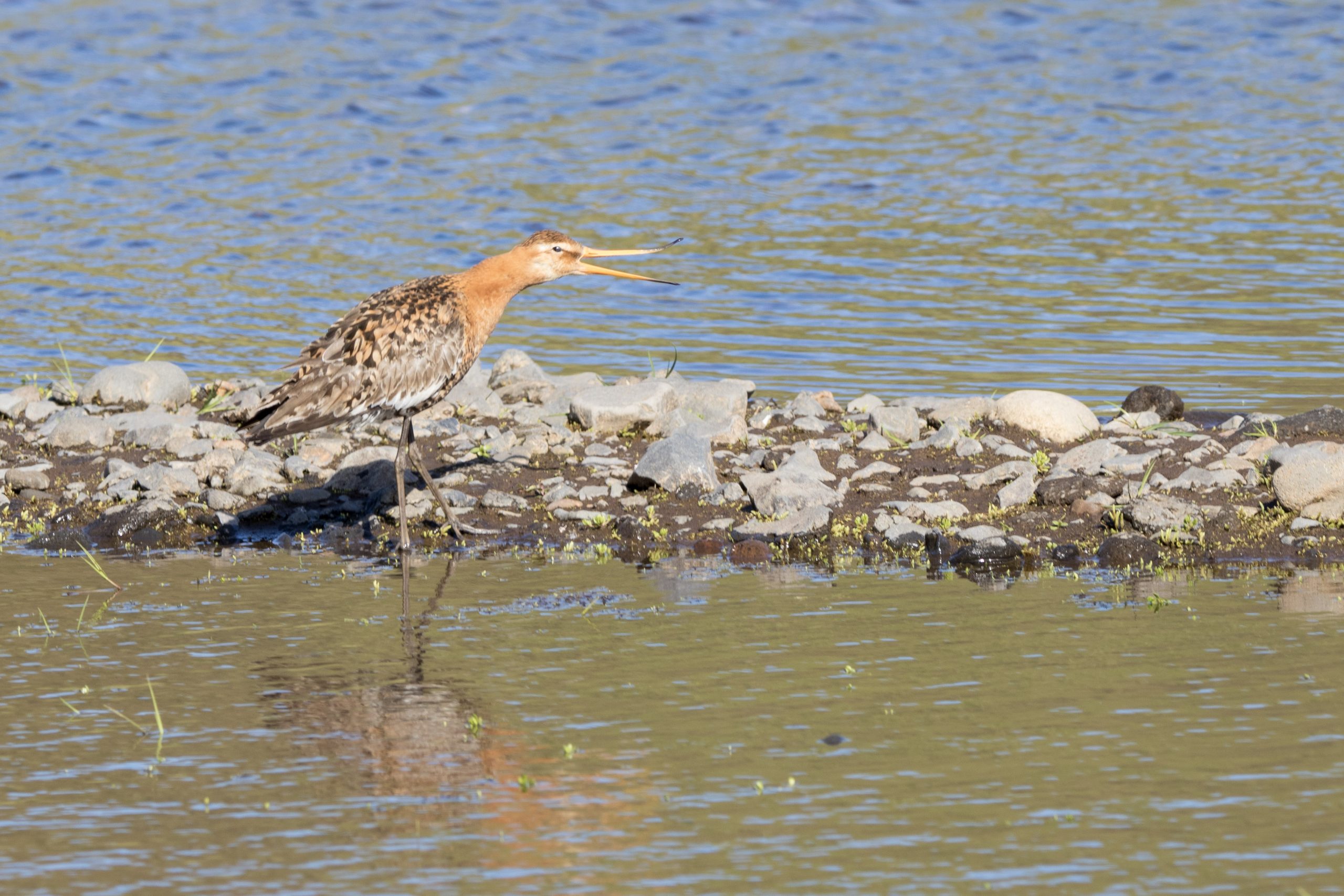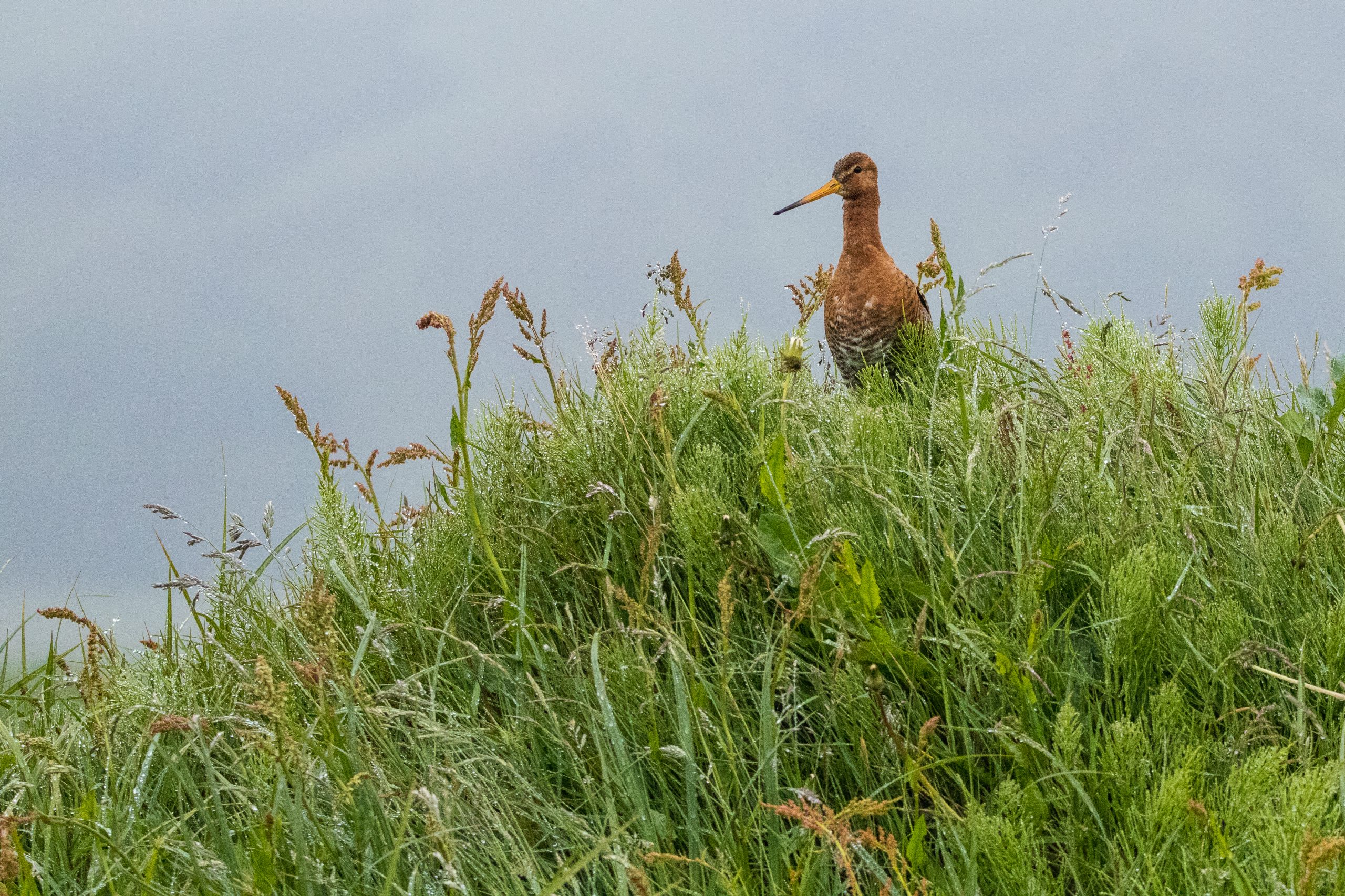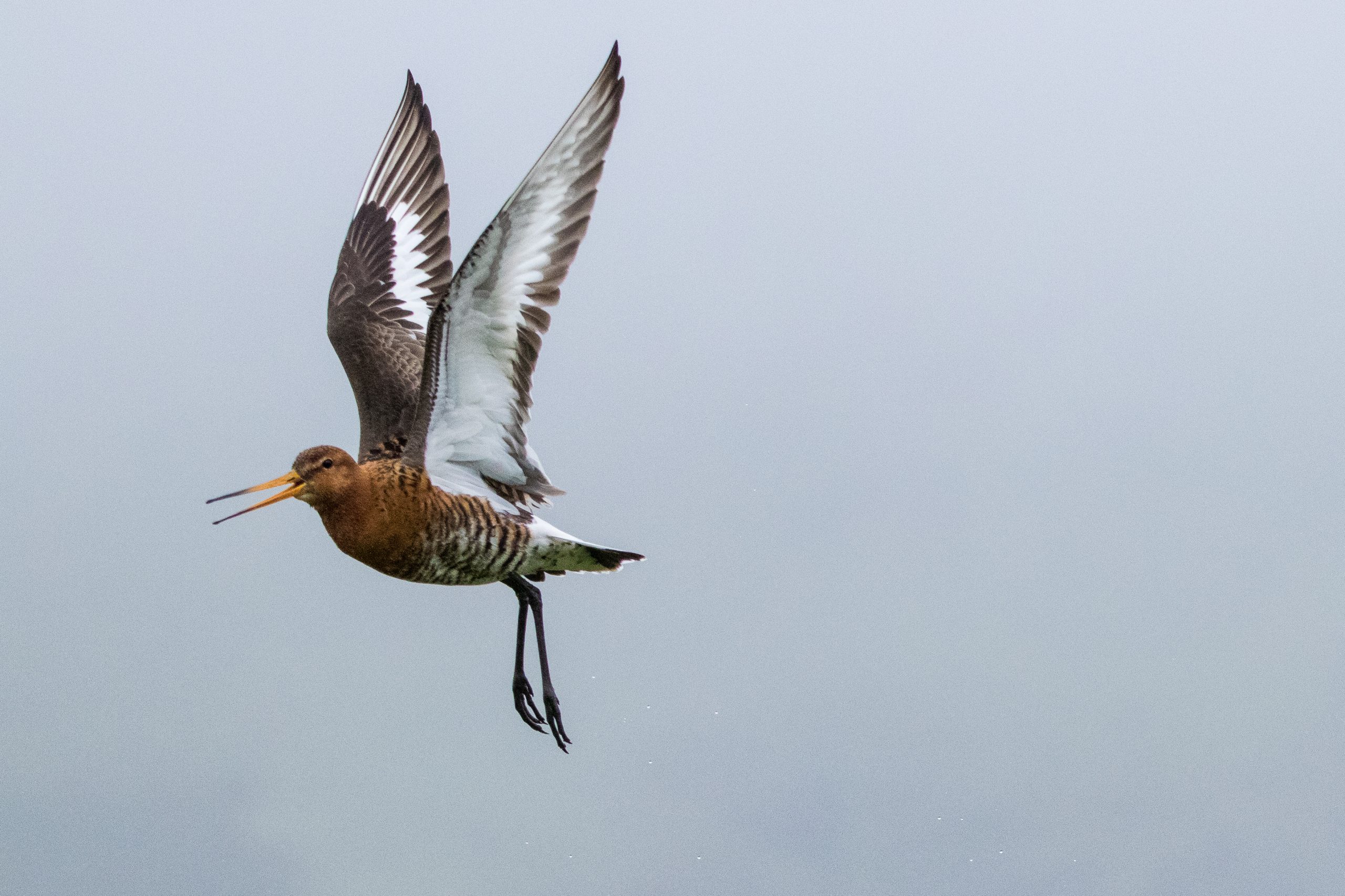The black tailed godwit (Limosa limosa islandica) belongs to the waders (Charadrii) but is of the Scolopacidae family. It is closely related to the redshank (Scolopacidae) and the whimbrel (Numenius phaeopus) within the subfamily Tringinae. This subspecies nests mainly in Iceland but has also been observed at a few destinations in the west and mid-Europe and east Russia. The black tailed godwit is a migratory bird, and the Icelandic population spends winters in Great Britain, France, and at the Iberian peninsula (Portugal, Spain, Morocco).
What does it look like?
The black tailed godwit has long legs, the length is 15.7-17.7 in, and the bird weights 12.35 oz. The wings are large compared to the body size with a wingspan of 27.6-32.3 in. The head, neck, and chest have a characteristic rusty brown colour, but the back is grayish and the belly creamy. A dark wingtip and tail are along with white wing bars and rump noticeable during flight. The bill is long, straight, and yellowish with a dark tip. The long feet are gray or black, extending from the bird’s tail during the trip. The sexes look alike, but the male has brighter colours during the nesting period. The winter plumage is dull grayish.

Distribution and population size
The black tailed godwit was first nesting in the south and southeast Iceland but dispersed all around the country after 1920. In North Iceland, the first nest was observed at lake Mývatn in 1963, and a few years later, it occupied all of east Iceland. The population has grown intensively, and today, the bird is found all over the country. However, south Iceland is still considered the most important habitat. The black tailed godwit is most common in wetland or farmland and is always close to water. The population size is not fully known but was recently estimated 68.000 breeding pairs.
The male must arrive on time to the nesting grounds
The black tailed godwit arrives in Iceland at the beginning of April. Both in spring and autumn, it stays at shores, mudflats, and river islets where food is abundant. The most important feeding sites are in Borgarfjörður, Álftarfjörður and the river islets at Eyjafjarðará where hundreds of birds accumulate and feed before and after their annual migration. The birds wait at the nesting site for their companions to arrive as the pairs do not necessarily migrate to the country together or even spend winters in the same country.
Most pairs arrive at the same time to the nesting site, but if the male is late, it can result in a divorce. How the couples plan their migration to the nesting site and arrive at the same time is a mystery. After a short courtship, the birds choose a nesting site on a grasstop or other dry place close to a wetland where they lay 3-4 eggs. The egg weighs about 1.4 oz. The black tailed godwit is a social bird and often nests in sparse colonies in wetlands.

Breeding ecology of the black tailed godwit
The black tailed godwit is a monogamous bird that lays eggs in a small dent insulated with dry hay and hidden in vegetation. The eggs are dark brown or olive green with spots and hatch in 22-24 days. Both sexes incubate. The young leave the nest 24h after hatching and follow their parents to the feeding grounds. The youngs roam the area under their parents” protection until able to fly 25-30 days old.
What do they eat – Where do they go?
The black tailed godwit is an opportunist when it comes to feeding. In spring and fall, it is often seen at mudflats eating polychaeta, gastropods, and all sorts of invertebrates. During the nesting period, it feeds on the most abundant invertebrates in the nesting area, mostly worms and insects. Late summer, it also feeds on seeds and berries. The black tailed godwit is very social when feeding and is often seen in large flocks in newly mown fields and mudflats.

The young feed mostly on insects, but as they mature, their diets become the same as adults. In September, the birds accumulate and leave the country. The females leave first, but the males stay with the young until they can fly. Some flocks migrate to Great Britain but others to the Iberian peninsula.
“Jaðrakan”, what a strange name!
The Icelandic name for the black tailed godwit is “jaðrakan” which is of unknown origin. The word is found in all genders in Icelandic as jaðraki, jaðrekja, and jaðrakön. It is assumed that the name is a loanword from Gaelic “adharcan” which is the name of the bird lapwing (Vanellus vanellus) or even from “jaðrakona” which is the name of water rail (Rallus aquaticus) in Faroese.

Did you know?
- The black tailed godwit becomes sexually mature 1-3 years old.
- Commonly, the black tailed godwit becomes 15 years old, but the oldest known bird was 23 years old.
- The Icelandic name “jaðrakan” is strange but is dated in Icelandic literature back to the year 1300.
- The black tailed godwit is noisy at the nesting site and scares off intruders with high pitch sounds. “Vigga, vigga,” “vita vita”, and “vaddúdí vaddúdí” are the most common sounds.
- The population size of the black tailed godwit has increased in Iceland in the last decades, and it has occupied new areas all around the country.
Cool links:
Cool facts from The Royal Society for the Protection of Birds (RSPB)
See more in the Handbook of the Birds of the World
See and hear the bird on YouTube
A great blog about Icelandic waders
Learn more about Icelandic birds in our article section
Icelandic Version – Íslenska
Author: Dr. Þórður Örn Kristjánsson
Photographer: Dr. Þórður Örn Kristjánsson

